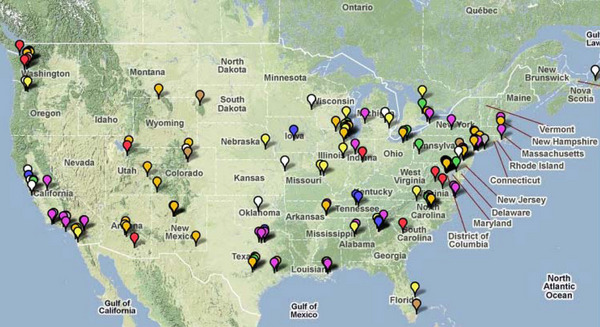WASHINGTON, DC — Landscape architects and experts have launched a sweeping test of a sustainability rating and assessment system for greenspaces in the built environment with a pilot that involves more than 150 sites in 34 states, Canada, Iceland and Spain.
The pilot is being conducted by the Sustainable Sites Initiative, abbreviated as SITES, which led the development of the voluntary rating program that its creators hope will be used like the LEED system -- but one focused on landscapes and greenspaces.
The system created by the partner organizations behind SITES -- the American Society of Landscape Architects, the Lady Bird Johnson Wildflower Center at The University of Texas at Austin and the United States Botanic Garden -- is intended for use on sites of all types to gauge and certify their sustainability.
The standards, which were released last fall, can be applied to landscaping at commercial and public buildings, transportation corridors and parks. It's not necessary for buildings to be present, but the sites must be designed landscapes or greenspaces.
SITES opened applications for the pilot in November and expected to receive perhaps 75 strong contenders, according to Steve Windhager, director of the Landscape Restoration & Sustainable Sites Initiative at the Lady Bird Johnson Wildflower Center at the University of Texas at Austin. The organization received more than four times that many.
"We were overwhelmed, but in a good way," Windhager told GreenerBuildings.com. "We received 354 applications."
The pilot includes projects at corporate headquarters, industrial complexes and educational centers as well as high-profile efforts for the Smithsonian’s National Museum of African American History & Culture, the New Orleans’ Lower Ninth Ward Sustainable Infrastructure Project and the Indianapolis Super Bowl Village. They range from less than an acre to hundreds in size and involve relatively modest to multimillion-dollar budgets.
In addition to providing visual and physical respite from the built environment, the sites in the pilot are designed to reduce environmental impacts not only of the location itself, but also the lands around it in many cases. For example, sites in the pilot may restore habitats, rehabilitate landfills, clean and store stormwater in addition to lowering the urban heat island effect or fostering outdoor education.

“It’s exciting that many of these pilot projects -- eight in every 10 -- will revitalize previously built landscapes,” Susan Rieff, executive director of the Lady Bird Johnson Wildflower Center said in a statement this week. “We can address the serious environmental challenges the world faces in its existing communities by consciously redeveloping these spaces for ecological health as well as beauty.”
Under the SITES system, locations are rated on a 250-point scale for possible certification at four levels. Points are awarded for elements such as site selection, water, soil, vegetation, materials, human health and well-being, construction and maintenance. Sites attaining 40, 50, 60 or 80 percent of possible points are awarded one-, two-, three- or four-star certification, respectively.
Projects participating in the pilot are in various stages of development; some are still in the design phase, others are near completion. They all have until June 2012 to provide feedback about the benchmarking program to SITES. The data will be used in the certification process for the projects and to revise the assessment system. SITES has a goal of releasing a final version of its rating system and reference guide in 2013.
Details about the projects selected for the pilot are available at www.sustainablesites.org/pilot. More information about the Sustainable Sites Initiative and its rating system is available from "The Sustainable Sites Initiative: Guidelines and Performance Benchmarks 2009." (pdf) and "The Case for Sustainable Landscapes" (pdf).
Images of the Center Street greenspace and rain garden at the University of Texas, Arlington, courtesy of the Sustainable Sites Initiative.



















































